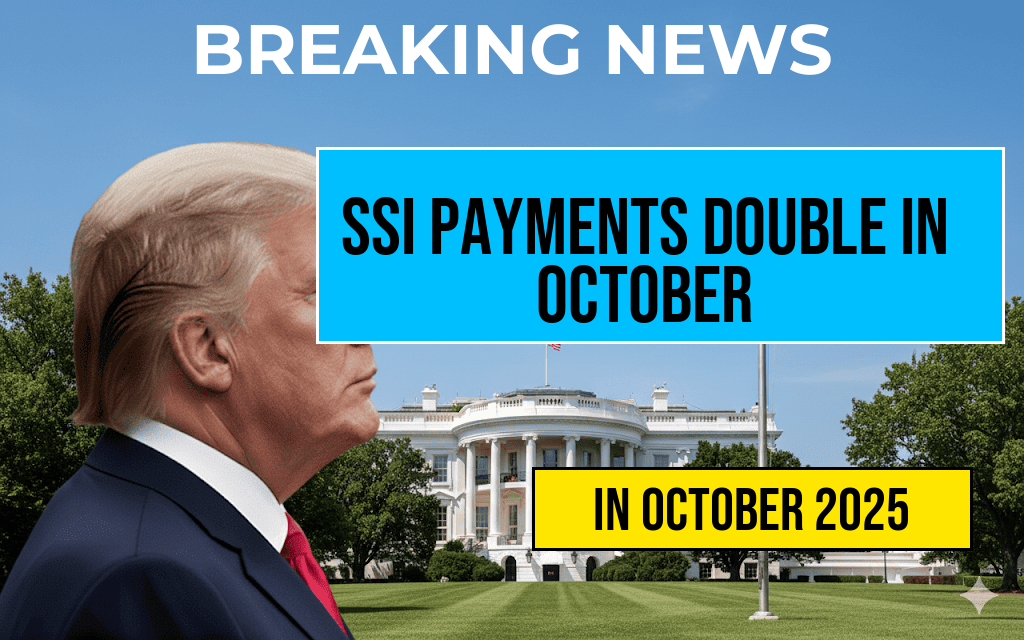Recipients of Supplemental Security Income (SSI) benefits will see an unusual occurrence in October, as the Social Security Administration (SSA) plans to issue two payments for the month. Typically, SSI beneficiaries receive a single payment each month, usually around the third week. However, due to adjustments related to the timing of the federal government’s fiscal calendar and historical scheduling practices, beneficiaries will receive two payments: one on October 1 and another on October 31. This rare double distribution aims to ensure continued benefit coverage without interruption and aligns with the SSA’s efforts to streamline payment processing. The twice-issued payments will help beneficiaries plan their expenses, especially as October often marks increased spending on healthcare, utilities, and seasonal needs.
Understanding the October Payments Schedule
Why are two payments issued in October?
The primary reason for two payments in October stems from the SSA’s schedule adjustment to accommodate federal fiscal year changes and to align benefit disbursements with the calendar. Since October 1 marks the beginning of the federal government’s fiscal year, the SSA often adjusts its payment calendar accordingly. This year, the first payment will be disbursed on October 1, coinciding with the official start of the new fiscal year, while the second will follow on October 31, fulfilling the typical monthly cycle.
Historical context of double payments
While not common, issuing two SSI payments within a single month has occurred periodically, often tied to administrative or fiscal policy changes. Past instances have been linked to shifts in payment processing dates or adjustments in the timing of benefit calculations. These occurrences are generally well-communicated to beneficiaries to prevent confusion.
Impact on Beneficiaries
| Payment Date | Purpose | Additional Notes |
|---|---|---|
| October 1 | Initial benefit disbursement for the month | Aligned with fiscal year start |
| October 31 | Second payment to cover remaining benefits | Ensures full coverage for the month |
What beneficiaries should expect
Recipients are advised to verify their payment schedules via the SSA’s official channels to confirm the arrival of both payments. The early October disbursement ensures that beneficiaries have access to funds right at the start of the month, while the later payment provides a second influx of resources, which can be especially helpful for managing expenses toward the end of October. Beneficiaries relying on these payments should plan accordingly to avoid overdraft fees or missed bills.
Official Guidance and Resources
The SSA emphasizes that beneficiaries do not need to take any action to receive these payments; they will be processed automatically. For questions or concerns, individuals are encouraged to consult the SSA’s official SSI page or contact their local SSA office. Additionally, updates regarding payment schedules are frequently posted on the SSA’s My Social Security portal.
Broader Context of SSI Payments
How SSI payments are structured
Supplemental Security Income benefits are designed to assist individuals with limited income and resources who are aged, blind, or disabled. The amount of SSI benefits is determined by federal standards, with the maximum monthly benefit set annually. As of 2023, the maximum federal SSI payment is $914 for individuals and $1,371 for couples, though actual disbursements can vary based on other income and state supplements.
Changes anticipated in upcoming months
While the double payment in October is an anomaly, the SSA continues to evaluate its payment procedures to improve efficiency and clarity. Future adjustments may include more synchronized payment schedules or technological enhancements to benefit delivery. Stakeholders are encouraged to stay informed through official SSA channels and reputable news sources such as Forbes for updates on policy changes affecting benefit recipients.
Additional Considerations
- Budgeting tips: Beneficiaries should consider setting aside funds from the October payments to cover expenses that often increase in the fall, such as heating costs or seasonal clothing.
- Potential delays: Although payments are scheduled to be issued on the specified dates, delays can occur due to administrative issues or banking holidays.
- Tax implications: While SSI benefits are generally not taxable, recipients should review their overall income with a tax professional to understand any potential implications.
The issuance of two SSI payments in October underscores the SSA’s commitment to maintaining consistent support for vulnerable populations, even amid administrative adjustments. Beneficiaries are encouraged to stay informed and prepared for this unique schedule, ensuring seamless access to their benefits during the month.
Frequently Asked Questions
What is the reason for Social Security issuing two SSI payments in October?
The Social Security Administration announced that in October, they will issue two SSI payments to ensure beneficiaries receive their benefits on time due to a scheduling adjustment.
When will the two SSI payments be issued in October?
The first payment is scheduled for October 1st, and the second payment will be issued on October 31st.
Who is eligible to receive these two SSI payments in October?
Eligible SSI beneficiaries will receive two payments if their usual payment date falls in October, ensuring they receive their benefits without delay during this period.
Will this double payment affect future Social Security or SSI benefits?
No, the double payment in October is a one-time adjustment and will not impact your future benefits. Your regular payment schedule will resume afterward.
Do recipients need to take any action to receive the second payment?
No, recipients do not need to take any action. The Social Security Administration will automatically process and issue the second payment in October.






